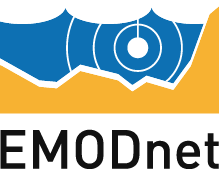CDI Data Discovery and Access service:
The CDI service is maintained and operated by the SeaDataNet network (see www.seadatanet.org). It is a service of the SeaDataNet pan-European infrastructure for marine data management and it has also been adopted by a range of other portals for finding and retrieving marine data sets from European data providers. This includes several EMODnet portals (see www.emodnet.eu).
The CDI service gives users a highly detailed insight in the availability and geographical spreading of marine observation data that are acquired and managed by an increasing group of data providers from government and research and for which users can request access for downloading. Currently more than 2 Million CDI entries can be found for data sets for physical oceanography, marine chemistry, geology, geophysics, biology, and bathymetry as provided by more than 100 data providers in countries around the European seas.
How does it work?
The process from search to getting access to requested data sets is illustrated and explained below. This allows users to retrieve data sets from the distributed data centres in a common and federated way via a common interface.

The CDI user interfaces:
The CDI user interfaces at various portals enable users to search by a combination of search criteria or by facets. The selected data sets are listed. Geographical locations are indicated on a map. Clicking on the display icon or map retrieves the full metadata of each data set. This gives information on the what, where, when, how, and who of the data set. It also gives standardized information on the data access restrictions that apply. The interface features a shopping mechanism, by which selected data sets can be included in a shopping basket.
Try e.g. the SeaDataNet user interfaces.
User registration:
All users can freely query and browse in the CDI directory. Most of the data sets are also available without restrictions and only require that the user is registered with Marine-ID and as part of that procedure has agreed with the SeaDataNet policy. Registered users can submit requests for data access via the shopping basket mechanism.
Register as SeaDataNet user.
Viewing progress and downloading requested data sets:
Thanks to the user registration, users can submit multiple shopping baskets and each basket can contain multiple requests for data files and from multiple data providers. The users then can follow the processing of their data requests by multiple SeaDataNet data providers in time through the SeaDataNet CDI tracking mechanism. This Request Status Manager (RSM) also enables users to download requested data sets, once and if their requests have been processed. After submitting a shopping basket, users receive a confirmation e-mail of their data set requests and a link to the RSM service. By log-on to the RSM service users can check regularly the status of their requests. Data providers can follow via the RSM service all transactions for their data sets online and can handle requests which might require their mediation. Each CDI metadata record includes a data access restriction tag. It indicates under which conditions the data set is accessable to users. This determines per data set request, whether a user gets direct access automatically, or whether the request first has to be considered by the data centre that might contact the user for more information.
Check the Request Status Manager.


